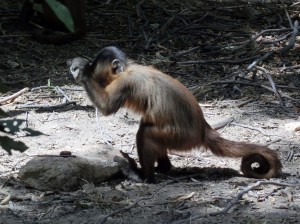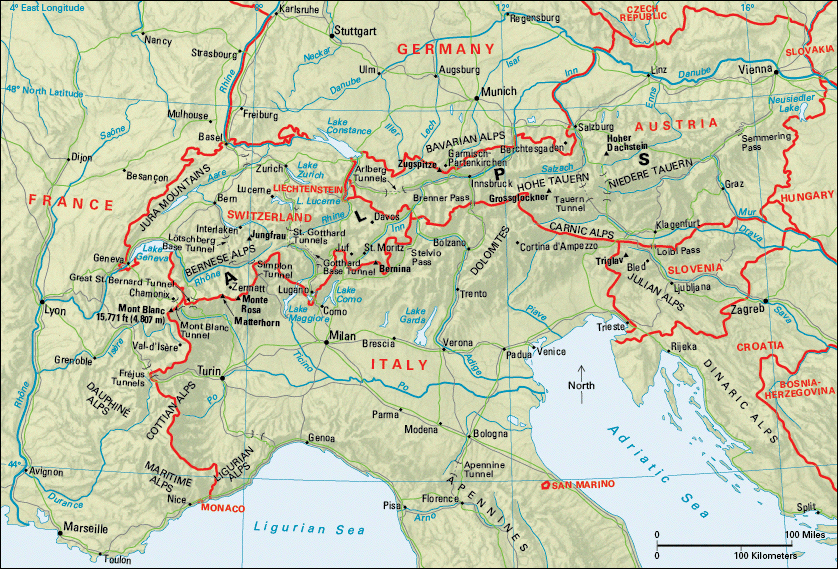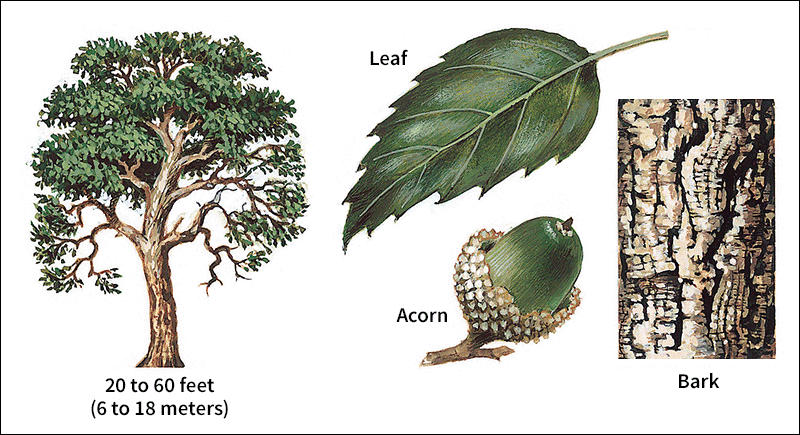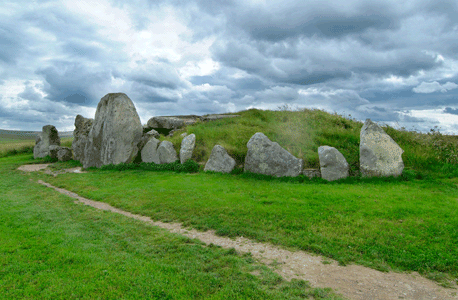Monkey Stone Age
Wednesday, August 24th, 2016August 24, 2016
Monkeys in the Amazon rain forest likely entered their own Stone Age more than 700 years ago, according to scientists investigating a fascinating site at Serra da Capivara National Park in northeastern Brazil. At the site, scientists from the University of Oxford in the United Kingdom and from Brazil’s University of São Paulo observed bearded capuchin monkeys (Sapajus libidinosus) using rocks as hammers to crush hard-shelled nuts atop flat stone anvils. The scientists discovered dozens of discarded stone hammers and anvils once they began shallow excavations at a site regularly visited by the monkeys. The scientists determined that monkeys have been using simple stone tools at that site for more than 700 years. The findings were described in the July 2016 issue of the journal Current Biology.

A capuchin monkey uses stones to crack a cashew nut in Serra da Capivara National Park in northeast Brazil. Credit: © Michael Haslam, Primate Archaeology Project/University of Oxford
Stone Age is a term used to designate the period when prehistoric people used stone, rather than metal, tools. For humans, the Stone Age began about 3.3 million years ago, when small stones were first made into crude chopping tools by prehuman ancestors called Australopithecines. It ended in the Near East about 3000 B.C., when bronze replaced stone as the chief material from which tools were made.
In dry northeastern Brazil, hard-shelled fruits and seeds are more common than the fruit and succulent leaves that capuchins prefer. Centuries ago, a clever capuchin figured out how to pound open a nut using a heavy stone as a hammer on a heavier flat stone anvil, thereby opening up an entirely new and abundant source of food. The scientists observed that the monkeys will carefully select hammer stones and bring them to trees bearing nuts and fruits. The monkeys then stash the stones in hidden spots around the trees for later use. The research site in Brazil is littered with such stones that have accumulated over centuries.
For many years, scientists considered humans to be the only species that made extensive use of tools. In the 1960’s, however, naturalist Jane Goodall discovered that wild chimpanzees in Africa make and use simple tools. Goodall observed them stripping tree twigs and using the twigs as tools for catching termites. She also observed chimpanzees using rocks to break open hard-shelled palm nuts in the forest.
Earlier in 2016, some of the scientists involved in the Brazil research published observations of monkeys called macaques using stones to break open shellfish and nuts in Thailand. Now, with the Brazilian study, there seems little doubt that some species of nonhuman primates have long since entered their own Stone Age. The site in Brazil provides scientists with a unique opportunity to study the ecological, social, and cognitive (mental) factors that likely played a role in the development of technology and culture millions of years ago at the dawn of humankind.





